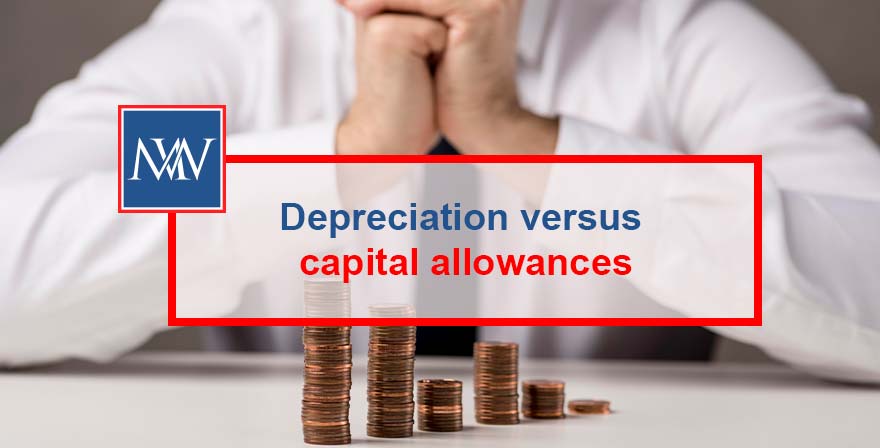
Depreciation versus capital allowances
Tax and accounting rules are not identical and it is sometimes necessary to adjust the accounting profit to arrive at the profit for tax purposes. One area where the rules differ is in the write-off of capital expenditure.
For accounting purposes, depreciation is charged to the accounts so as to write off the asset over its useful economic life. This may, for example, be on a 33% reducing balance basis or on a 25% straight line basis.
By contrast, for tax purposes, relief for capital expenditure is given by way of capital allowances.
The capital allowances that are available depend on the nature of the asset, and there may be more than one possible claim. For example, qualifying expenditure on plant and machinery may benefit from the annual investment allowance (AIA) which allows a 100% deduction for the expenditure in the year in which it is incurred up to the £1 million AIA limit. Where the AIA is not available, or the taxpayer does not wish to claim it, writing down allowances are given at the rate of 18% for main rate expenditure and at 6% for special rate expenditure. Companies can also benefit from full expensing on qualifying new plant and machinery that would otherwise be eligible for main rate writing down allowances.
Like the AIA, this provides immediate relief for the full amount of the expenditure but, unlike the AIA, the amount of expenditure that can benefit from full expensing is not capped. A 50% first-year allowance is available to companies on new qualifying assets that would otherwise qualify for special rate writing down allowances, as long as the expenditure is incurred on or before 31 March 2026. This can be useful if the AIA has been used up. First-year allowances are available at a 100% rate for new zero emission cars. This again is beneficial as expenditure on cars does not qualify for the AIA, full expensing or the 50% first-year allowance available to companies.
Efficiently calculate asset depreciation with a reliable depreciation calculator for better financial decision-making.
Adjusting the profit
As a result of the differences between depreciation and capital allowances, it is necessary to make an adjustment to the accounting profit to arrive at the taxable profit. Depreciation must be added back to the accounting profit and capital allowances deducted (or balancing charges added) to arrive at the taxable profit. Further adjustments may be needed for other expenses that are not allowable for tax purposes, such as entertaining expenses.
Where the AIA or full expensing is claimed, relief is given in full for tax purposes earlier than for accounting purposes. This means that the taxable profit will be lower than the accounting profit in the year in which the expenditure is incurred, but in subsequent years the accounting profit will be lower as depreciation will continue to be charged but the capital allowances have already been given.
Example
A Ltd is a new company and spends £200,000 on plant and machinery on which it claims the AIA.
For accounting purposes, depreciation is charged at 30% on a reducing balance basis.
The accounting profit for the year is £350,000 after charging depreciation of £60,000.
To arrive at the taxable profit, the depreciation of £60,000 must be added back, but the company can deduct the capital allowances of £200,000. The taxable profit is therefore £210,000.
For more information, Book a Free Consultation
Need Accountancy Support?
For information on bespoke training, or if you have any other questions for Makesworth Accountant, please fill in your details below
















 151
151